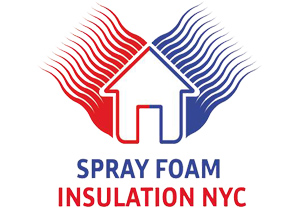Insulating Crawl Space | Crawl Space Insulation Cost | Spray Foam Insulation NYC
CRAWL SPACES AND COLD FLOORS
Crawl spaces and cold floors is all too common of a problem during the heating season - which you may not be thinking about right now, as summer is just around the corner. But in fact, now is the best time to be thinking about your crawl spaces and cold floors, because now is the best time to fix it. The problem with crawl spaces and cold floors is that the temperature in your home will be comfortable, but your home's floors are cold to the touch. This happens when whatever is underneath your floor is not properly insulated
Homeowners whose homes are built over crawlspaces may wonder about this. Or they may simply turn up the thermostat and resign themselves to higher utility bills. Regardless, it’s not really a mystery if you understand why a crawlspace insulated with fiberglass is a really batty idea.
First consider that most crawlspaces are not sealed. Warm humid air in summer can easily find its way through vents, ill-fitting hatchways, and the small gaps in the framing that rests atop foundation walls. As this moisture-laden air cools and reaches its dew point, condensation quickly forms on cool crawlspace surfaces – including the aforementioned insulation. Moisture adds weight to the fiberglass batts, which sag, becomes dislodged, and loose their effectiveness. Gaps open up that lead directly to the subfloor above.
How Much Does it Cost to Insulate a Crawl Space?
The average cost in 2,018 to insulate a crawl space with spray foam is between $1,800 and $3,600.
How much money? You will save 15% to 35%! That's a lot of money! Over the years, it really adds up! You are paying the price each and every month in higher energy bills, by living in a house with a dirt crawl space. Of course there are variables, such as how many vents you have, whether you live in a one or two story home, if you have ducts in the crawl space, how big your crawl space is, etc.
Crawl spaces should be insulated and sealed
Still, sometimes a crawl space makes sense. Crawl space walls should be insulated with rigid foam or closed-cell spray polyurethane foam, and should be sealed rather than vented.
Crawl spaces should be treated as if they were miniature basements, which is exactly what they are. The best current practice is to make a crawl space a conditioned area like the rest of the house. This is permitted by newer versions of most building codes, and is much better for the house and residents.
If you don't need the subterranean living space, you can save money on excavation and foundation walls. Crawl spaces should be sealed, insulated, and passively kept warm if mechanical equipment, ducts and plumbing are left there. A crawl space is less likely to have moisture problems if the crawl space floor is higher than the exterior grade.
What Factors Determine the Crawl Space Insulation Cost?
If crews are insulating the underside of the floor of the house or the crawl space walls and rim joist there is a world of difference between those two applications. That’s because there is so much more area to cover when insulating the walls compared to insulating under the floor.
If crews are laying down plastic to create a vapor barrier, there is also additional charges for this as well.
Another factor in cost is the material used to insulate the crawl space. We usually recommend an open cell spray foam, but there are circumstances when closed cell is a better option. Closed cell tends to be a more expensive product.
There are several differences between open cell and closed cell spray insulation, including the composition, blowing agent, sound dampening capabilities, and moisture permeability. Spray foam insulation, regardless of the type, is going to create an air seal and insulate your crawl space.

What are the Indicators the Crawl Space Needs New Insulation?
The same concept works in your house. When there is air movement on top of the floor and the crawl space isn’t sealed up, then the cold air below the floor moves throughout your home. You could also feel those cold drafts coming up around the bottom of your walls.
Cold floors can lead to high energy bills and the cold air in your crawl space is also to blame for freezing pipes. In Michigan many homes have ductwork that runs throughout the crawl space, so if cold air is flowing around those ducts the hot air in them will cool down before they ever reach the vent in your bedroom or living room.

What are the Benefits of Insulating the Crawl Space?
- Floors are no longer cold.
- No more drafts along baseboards.
- Lower energy bills.
- Prevents pipes that run through the crawl space from freezing and bursting.
